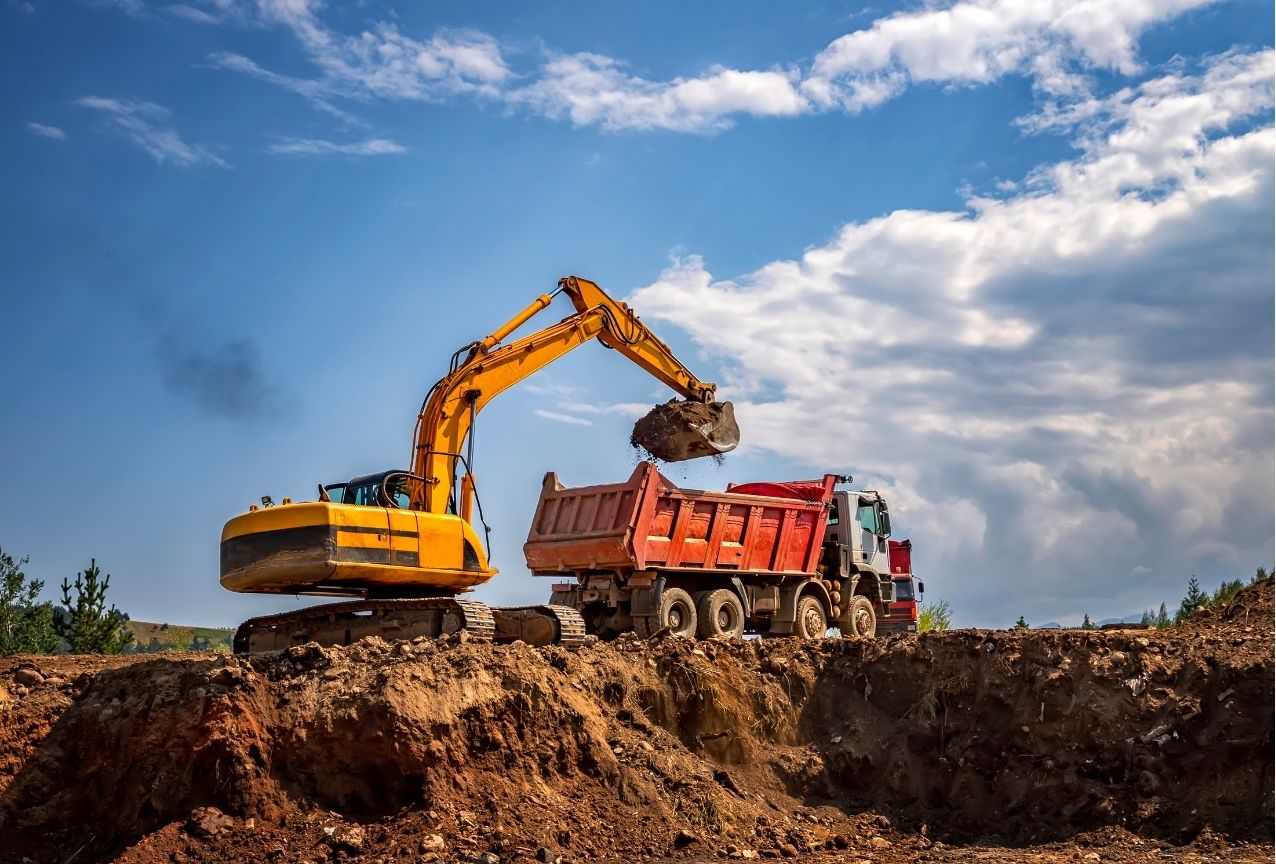Mass excavation projects are fundamental in various construction ventures. Yet, the complexity involved means that mistakes can be costly in terms of time, budget, and safety. This guide will delve into the five critical mistakes to avoid during mass excavation projects.
Introduction
Mass excavation is a core element of construction that involves moving large amounts of earth. This process lays the groundwork for various structures, from buildings to roads. It simplifies adjustments to the landscape while preparing sites for foundations or basements. As straightforward as it may sound, mass excavation requires careful planning and execution.
Mistakes in this phase can lead to significant repercussions. Delays, increased costs, and compromised safety standards are just a few potential issues. When teams overlook crucial details, the results can jeopardize the entire project. Therefore, understanding common pitfalls is essential for success.
In this article, we will explore five critical mistakes to avoid during mass excavation projects. By highlighting these errors, you can save time, reduce expenses, and improve safety on-site. Let’s dive into the common missteps to steer clear of, ensuring your project runs smoothly from the ground up.
Mistake 1: Insufficient Site Assessment
Mass excavation requires a solid understanding of the site. Skipping thorough site assessments can lead to significant setbacks. For instance, unexpected rock formations can halt progress. Likewise, undetected groundwater can turn a planned excavation into a muddy mess.
Why Site Assessments Matter
A comprehensive site assessment reveals essential information. It uncovers soil characteristics, existing structures, and potential hazards. This data helps in crafting an effective excavation plan tailored to the site’s unique conditions. Ignoring this step often leads to unforeseen complications.
Common Consequences
Overlooking site assessments can spell disaster for your project. Construction teams may face costly delays due to unexpected site conditions. Moreover, equipment failure can result from improper planning. The increased risk of accidents due to unstable ground conditions can’t be ignored either. Safety and efficiency go hand in hand.
Solutions to Ensure Proper Assessments
To avoid these pitfalls, invest in thorough geotechnical studies. Start with sub-surface investigations to understand the ground you’re working on. Consider conducting detailed pre-excavation surveys. This identifies not just geological issues but also infrastructure concerns.
Additionally, gather data on nearby environmental factors that may impact the project. Engage with land surveyors and geologists. Their expertise will provide insight and solidify your excavation strategy.
In summary, taking the time for a thorough site assessment pays off. It prevents costly mistakes and ensures a smooth excavation process. Don’t let insufficient assessments sabotage your project’s success. Be proactive, informed, and ready for the unexpected.
Ignoring Local Regulations and Permits
Mass excavation projects often overlook a key area: local regulations and permits. This oversight can lead to serious setbacks that can stall or derail a project entirely.
Why It Matters
Every locality has specific laws governing construction projects. Ignoring these can invite a host of problems. First, you may face fines or legal action. Second, your project could experience extensive delays while you rectify your oversight. This not only impacts your schedule but also your budget. In a field where time is money, these consequences can be severe.
Common Regulations to Consider
It’s crucial to familiarize yourself with these regulations. They may include:
- Zoning Laws: Ensure your project complies with local zoning requirements.
- Environmental Regulations: Assess the project’s impact on the surrounding environment. This can include air quality and water runoff.
- Safety Codes: Follow OSHA guidelines to maintain safety on-site.
Permit Checklist
To keep your project on the right track, use the following checklist to ensure you have all necessary permits:
- Building Permit: Required for most construction projects.
- Environmental Permit: Needed if your work could affect natural resources.
- Excavation Permit: Necessary for excavation and grading work.
- Site Plan Approval: Some areas require this before any digging begins.
Steps to Ensure Compliance
To avoid the pitfalls of non-compliance:
- Research: Start by reviewing local laws and regulations. Consider consulting a legal expert if you’re unsure.
- Engage Officials Early: Communicate with local government offices before the project begins. This sets clear expectations and highlights what permits you need.
- Document Everything: Keep records of your research, submissions, and communications regarding permits and regulations.
By prioritizing compliance, you can focus on what truly matters: getting the job done efficiently and safely. Ignoring these critical steps may save time upfront but will cost you much more in the long run.
Mistake 3: Underestimating Equipment Requirements
Mass excavation projects demand careful planning, especially regarding equipment. Neglecting to assess the necessary machinery can lead to significant setbacks.
The Mistake
Many project managers misjudge the amount and type of equipment needed. Perhaps they believe that a smaller excavator will suffice for a large job. This can lead to using machines that can’t handle the scale of the project. It’s a common error that can make the entire operation inefficient.
Consequences
Underestimating equipment requirements can lead to several issues. First, it may cause delays. If you don’t have the right tools, your crew will have to wait for additional machinery. This idle time can prolong the project timeline and inflate costs. Second, using insufficient equipment can compromise the quality of the work. The result might be uneven surfaces or inadequate grading, which can create problems later in the construction process.
Solutions
To avoid these pitfalls, conduct a detailed equipment analysis before the project begins. This means assessing the excavation scale and determining the equipment needed. For example, a large excavation might require multiple excavators and dump trucks to keep the workflow smooth. Consult with equipment specialists to ensure you have the right tools for the job.
Consider the terrain and soil conditions, too. Different soils require different machinery to achieve optimal results. Also, factor in the project timeline—more extensive jobs may necessitate additional equipment to meet deadlines.
Ultimately, investing time in an equipment assessment can save you considerable headaches later. By preparing adequately, you can ensure a smoother excavation process and stay on track with your project goals.
Mistake 4: Poor Project Management and Communication
Effective project management is crucial for any mass excavation project. Unfortunately, many teams underestimate its importance. Poor project management can lead to significant complications, including missed deadlines and budget overruns.
Lack of Clear Roles and Responsibilities
When team members aren’t clear about their roles, confusion worsens. Tasks may be duplicated, or some may fall through the cracks. Define clear responsibilities early in the project. This will streamline operations and ensure everyone knows their duties.
Ineffective Communication Channels
Communication gaps can create serious issues. Without consistent updates, team members may not be aware of changes or potential problems. Utilize regular meetings and digital tools to keep everyone informed. This fosters collaboration and minimizes misunderstandings.
Delays and Errors
When communication falters, delays often follow. A missing piece of information can derail progress. For instance, if a site supervisor fails to share critical details with equipment operators, this may result in downtime. This not only extends the project timeline but can also inflate costs.
Solutions for Better Management
To avoid these pitfalls, implement a robust project management framework. Use methodologies like Agile or Lean, which emphasize adaptability and clear communication. Regular check-ins can help maintain momentum and address issues before they grow. Additionally, leverage project management software for better visibility and coordination among teams.
By prioritizing strong project management and clear communication, you can navigate the complexities of mass excavation effectively. These practices not only enhance efficiency but also significantly reduce the risk of costly mistakes. Embrace these strategies, and you’ll find your projects run more smoothly from start to finish.
Mistake 5: Neglecting Safety Protocols
Neglecting safety protocols in mass excavation projects can have severe consequences. When teams overlook safety measures, they expose workers to significant risks. This mistake often arises from a lack of training or inadequate planning.
The Risks Involved
In excavation work, various hazards can put workers at risk. Common dangers include:
- Cave-ins,
- Falls,
- Equipment accidents.
When safety is not prioritized, the likelihood of accidents increases dramatically. In worst-case scenarios, these accidents can lead to serious injuries or even fatalities. Moreover, failing to comply with safety regulations can result in heavy fines and project shutdowns. This chain of issues affects not only the workers but also leads to:
- Project delays,
- Inflated budgets.
Solutions to Ensure Safety
To mitigate these risks, adopt essential safety practices from the project’s inception. Start by conducting thorough safety training for all team members. Ensure that everyone understands the potential hazards they may face on-site and how to address them. Regular safety briefings can reinforce this critical knowledge.
Key Safety Practices
Develop a comprehensive safety plan that includes the following components:
Personal Protective Equipment (PPE)
Ensure all workers have access to necessary gear such as helmets, gloves, and visibility vests. Enforce the use of PPE at all times.Site Safety Inspections
Schedule daily inspections to identify potential hazards before work begins. Address any concerns immediately to maintain a safe environment.Emergency Response Plans
Create and communicate a clear plan for emergencies. Make sure all team members know how to respond to incidents effectively.
Continuous Improvement
Ongoing training is crucial to maintaining a safe work environment. Regularly update safety protocols and administer refresher courses to keep safety at the forefront of everyone’s mind.
By prioritizing safety, you can create a secure work environment. This commitment not only protects workers but also enhances overall productivity. Remember, a safe project is a successful project. Implement these practices to avoid the risks associated with neglecting safety protocols in mass excavation.
Conclusion
Mass excavation projects are intricate and vital to construction. In this article, we highlighted five critical mistakes to avoid: insufficient site assessment, ignoring local regulations, underestimating equipment needs, poor project management, and neglecting safety protocols. Each mistake carries significant consequences that can impact your project’s timeline and budget.
To recap:
Insufficient Site Assessment: Always conduct thorough geotechnical studies. This helps you anticipate challenges like rock formations or groundwater issues.
Ignoring Local Regulations and Permits: Familiarize yourself with local laws. Compliance prevents costly delays and legal issues.
Underestimating Equipment Requirements: Analyze your project scale carefully. Ensure you have the right equipment for efficient operations.
Poor Project Management and Communication: Implement effective communication strategies. Strong project management can diminish delays and errors.
Neglecting Safety Protocols: Prioritize safety for all workers. Regular training and adherence to safety regulations are crucial to prevent accidents.
By avoiding these mistakes, you can enhance the efficiency and safety of your mass excavation projects. Take a proactive approach. Equip yourself with knowledge and strategies to sidestep potential pitfalls. The success of your projects depends on it!







